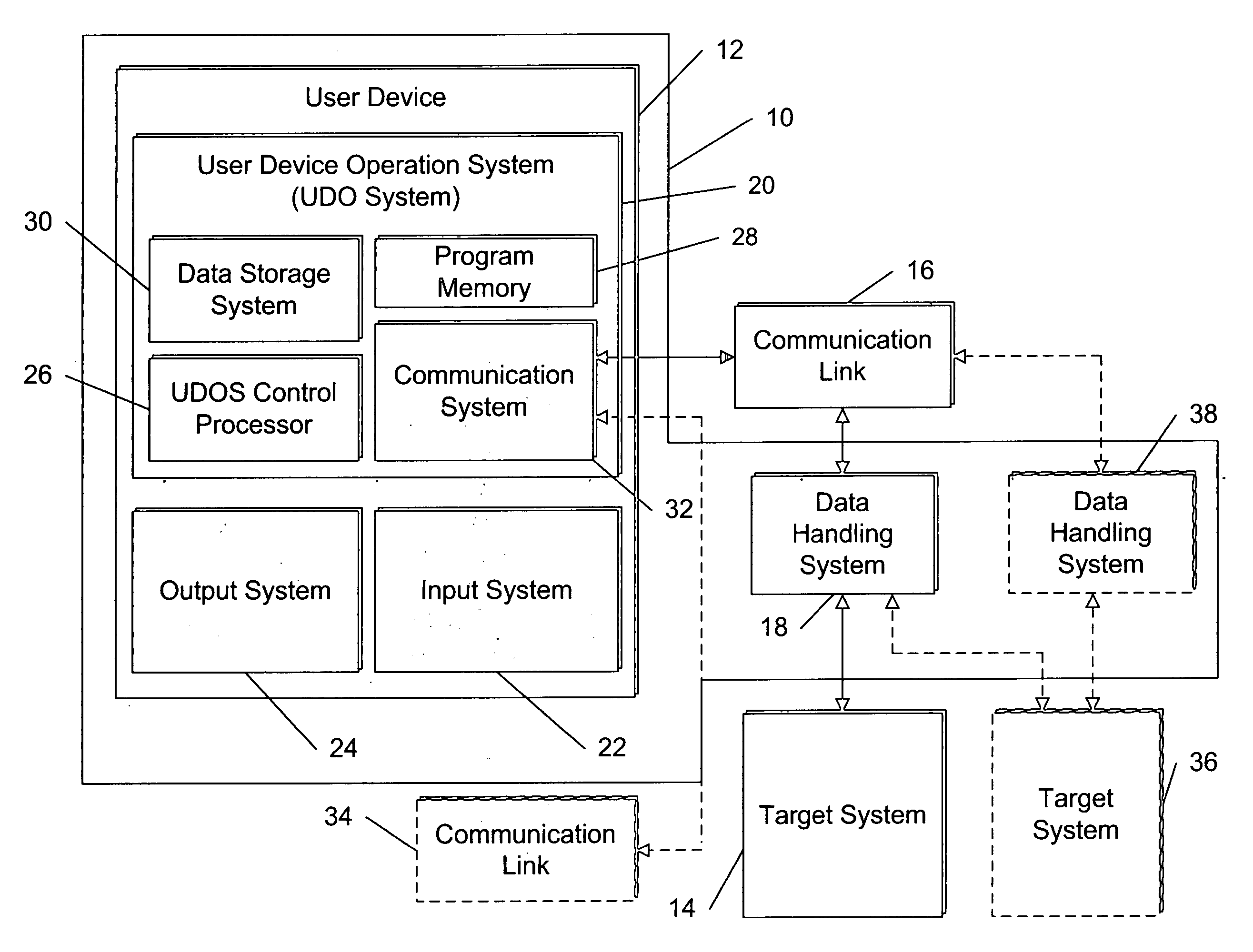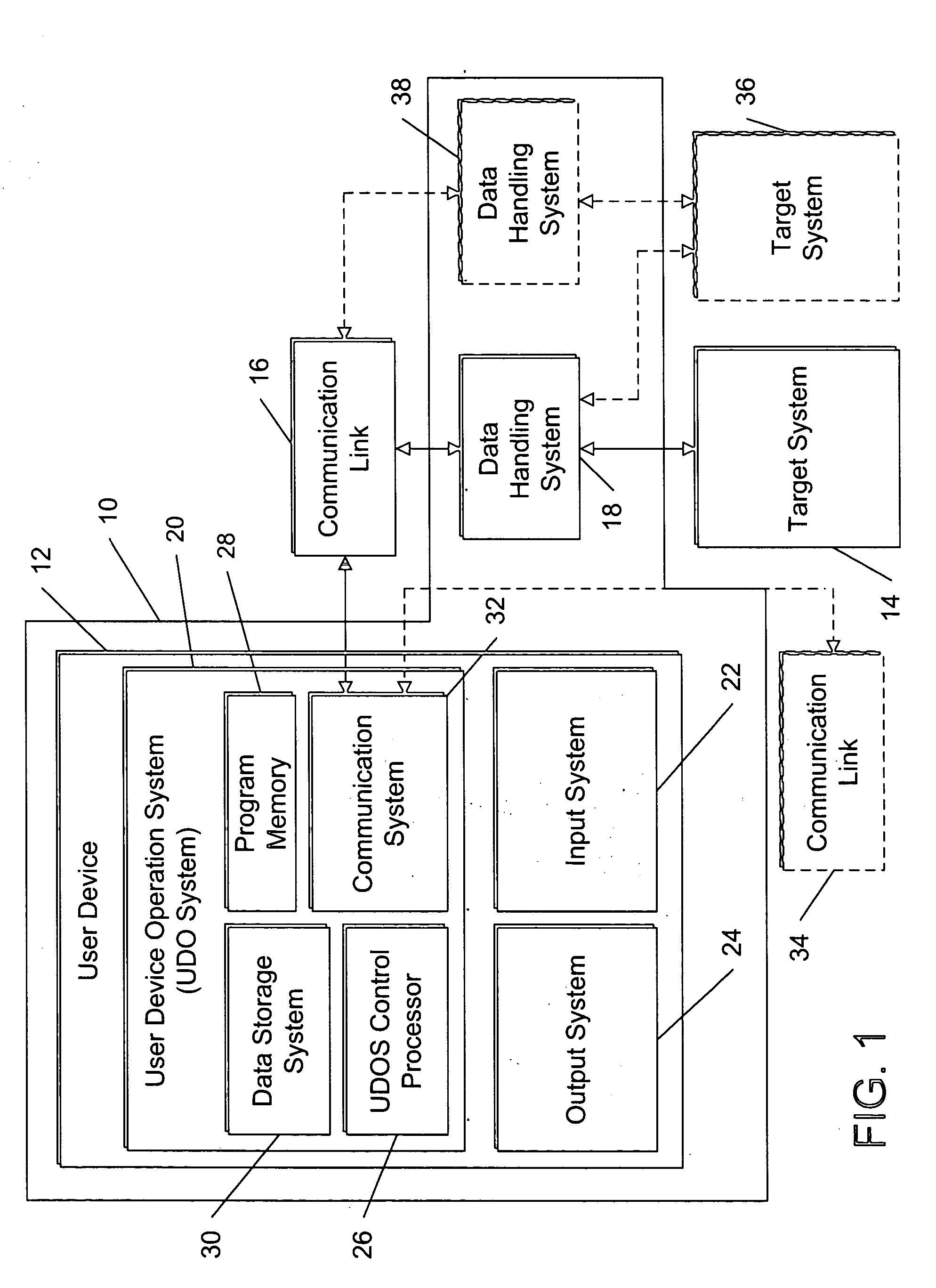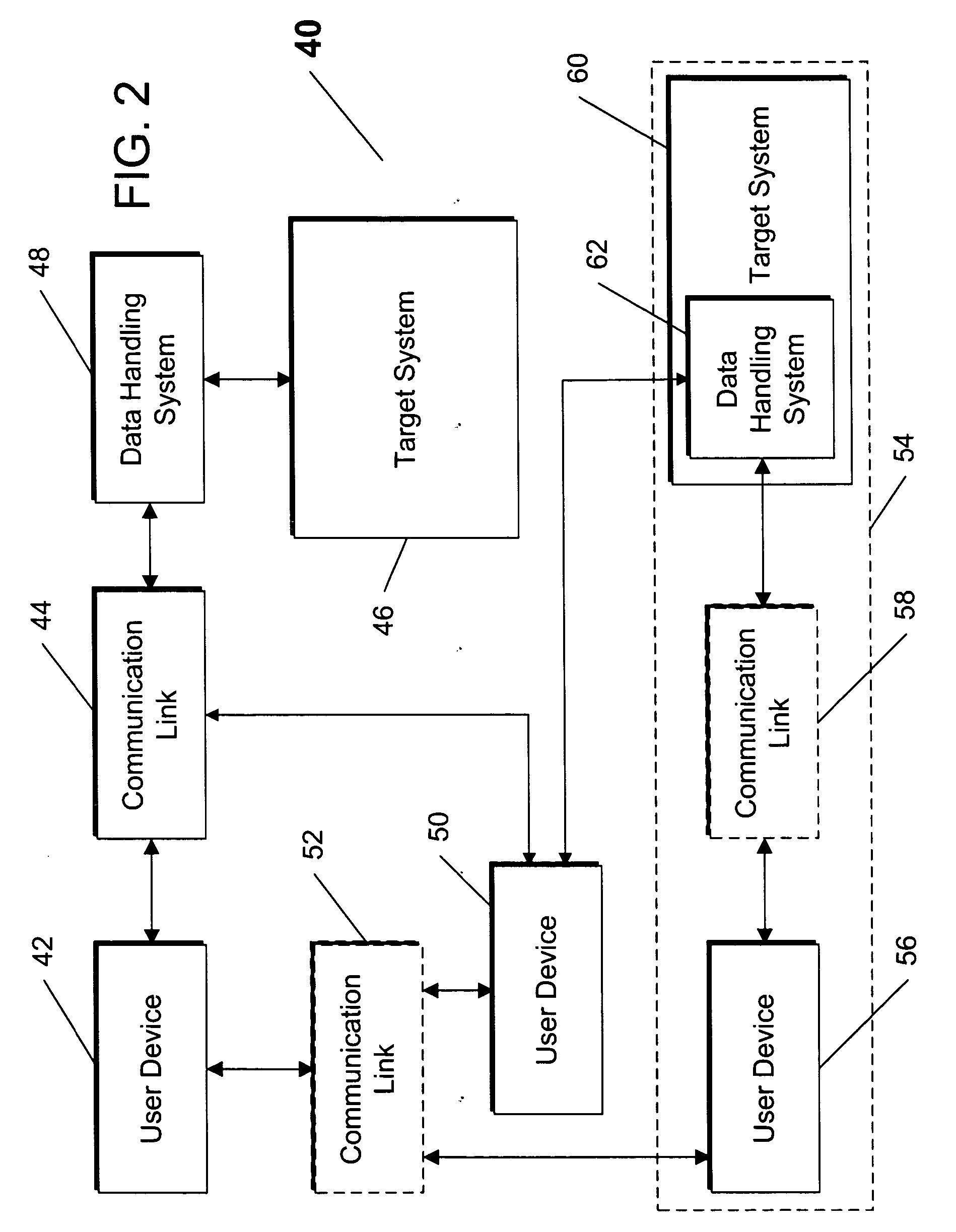System and method for real-time configurable monitoring and management of task performance systems
- Summary
- Abstract
- Description
- Claims
- Application Information
AI Technical Summary
Benefits of technology
Problems solved by technology
Method used
Image
Examples
first embodiment
[0046] Referring now to FIG. 1, the inventive IRMM system 10 is shown. The key novel features of the IRMM system 10 are embodied in the inventive processes, described in greater detail below in connection with FIGS. 6-14, that may be implemented in whole or in part as one or more executable programs, embedded functions, or other form of data processing tasks by one or more components thereof. These inventive processes enable the user to fully utilize the previously summarized novel and advantageous features of the IRMM system 10, as well as take advantage of numerous other novel features and options described below in connection with various figures.
[0047] The IRMM system 10 includes a user device 12 for enabling the user to build and / or use an interactive visual instrument panel for monitoring and / or managing one or more target systems, with the instrument panel being configured based on the user-defined requirements and based on the attributes of the target system(s) being monitor...
second embodiment
[0103] Referring now to FIG. 22, a graphical representation of an exemplary GUI that may be displayed to the user by the user device 12 via the output system 24 (such as a video monitor), and utilized by the user via the input system 22 to interact with the process 400 (and its sub-processes), is shown as an interface 700. It should be noted that the interface 700 only shows the specific front-end elements relevant to the process 400. Furthermore, the exact sizes and positioning of the various interface 700 regions is shown by way of example only—the regions may be readily re-seized and re-positioned as a matter of design choice without departing from the spirit of the invention.
[0104] The interface 700 includes a menu region 702 which may contain selectable menu items to interact with or otherwise control operations of the process 400 and other processes that may be performed by the user device 12, a monitoring element region 704 that displays all VI_ELEMENTs related to MINF attrib...
PUM
 Login to View More
Login to View More Abstract
Description
Claims
Application Information
 Login to View More
Login to View More - R&D
- Intellectual Property
- Life Sciences
- Materials
- Tech Scout
- Unparalleled Data Quality
- Higher Quality Content
- 60% Fewer Hallucinations
Browse by: Latest US Patents, China's latest patents, Technical Efficacy Thesaurus, Application Domain, Technology Topic, Popular Technical Reports.
© 2025 PatSnap. All rights reserved.Legal|Privacy policy|Modern Slavery Act Transparency Statement|Sitemap|About US| Contact US: help@patsnap.com



